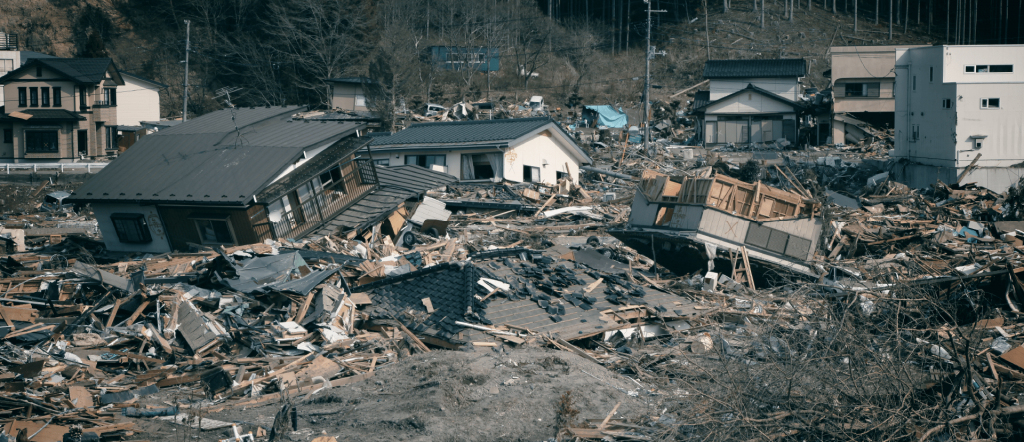Climate change physical risks
These are risks related to extreme weather events, which are linked to changes in weather patterns and an increase in occurrence and severity; they can directly affect companies through damage to assets or infrastructure, or indirectly when their operations and activities are altered. The financial performance of organizations can also be affected by changes in activities, as well as in provision, facilities, operations, supply chains, transportation, and safety of the companies’ employees (TCFD, 2017).
These risks are a direct consequence of the effects of climate change and are classified into two types of risks:
- Acute risks: arise from an increase in the severity and frequency of meteorological phenomena such as tropical storms, droughts, and floods.
- Chronic risks: arise from the long-term alteration of weather patterns, which is evident in the change of the average values of indicators such as temperature, sea level, or precipitation indexes, among others.
International and economic context of physical risks in Colombia
One of the most relevant mechanisms at the global level to address physical risks is the Paris Agreement, in which 195 nations (Colombia included) committed to keeping the global temperature increase below 2°C. Physical risks could mean high economic losses in Colombian insurance companies if the 2°C target is not met. Likewise, Colombia’s GDP could potentially be reduced by about 9.3% by 2100, according to Kompas, T. et.al, 2018, if these risks are not timely mitigated and addressed (Agu100, 2018).
In Colombia, acute risks can be seen in the damages caused by La Niña (2010-2011) and El Niño (2015-2016) phenomena, whose losses were calculated in 2% and 0.5% of GDP, respectively. Low and medium-intensity events, such as floods and landslides, have caused considerably more victims and costs than high-intensity events such as earthquakes (Varela C., 2012). If Colombia fails to adapt to climate change, it is estimated that annual economic losses could be 0.5% of GDP (Agu100, 2018). To face climate change, Colombia has been adapting policies and regulations, such as the National Plan for Climate Change Adaptation (PNACC), which aims to reduce the country’s vulnerability and increase its responsiveness to climate change threats and impacts (DNP, 2018).

How are we managing physical risks?
The insurance sector has been managing physical risks through the strengthening of products that offer coverage and make it possible to manage weather risks, such as the following:
- Crop and livestock insurance that protects crops against extreme weather events.
- Home insurance that provides coverage for fire, lightning, hurricane, hailstorm, smoke, water damage, falling trees, poles, signs and fences, heavy sea, avalanche, landslide, flood, and high winds.
- Insurance for engineering lines of business that covers damages resulting from climatic events.
- Vehicle insurance that protects the car against damage caused by weather events (basement flooding, hail damage to the windshield).
There are also insurance products that mitigate climate change, products that encourage the reduction of carbon footprint; for example, car insurance per trip, in which the insurance is charged per usage and not per period, and energy efficiency insurance.
The insurance sector has been offering index-based or parametric insurance to mitigate physical risks; these are insurance policies that provide protection when a predefined catastrophic weather event occurs and there are losses of assets and investments. They are currently used for natural catastrophe risks such as frost, floods, earthquakes, and other weather events. Before the insurance is in force, a statistical index is established to measure deviations from normal levels of parameters such as rainfall, temperature, earthquake magnitude, wind speed, and other climatic variables for the object to be insured. These insurance products not only compensate direct property damage but also direct or indirect economic loss. (WB, 2020) (SwissRe, 2019).
Use of georeferencing tools to measure vulnerability to climate change
Insurance companies use geographic information systems (See GIS page) that help insurance companies in underwriting, risk analysis, and claims management. These systems include tools to measure the threat and vulnerability of risks to different natural or anthropic phenomena, as well as climate change scenarios.
Strengthening the insurance sector performance
Sustainability School
Fasecolda provides training on climate risk to strategic areas within the insurance companies; for this purpose, we have created a specialized course on climate risk management at the Sustainability School. This tool has made it possible to transfer best practices in sustainability to the insurance sector, in order to comply with our strategy of sustainable growth and strengthen the country’s resilience in case of future unfavorable eventualities must be faced.
We invite you to watch the following video in which we summarize our progress at the Fasecolda Sustainability School.


